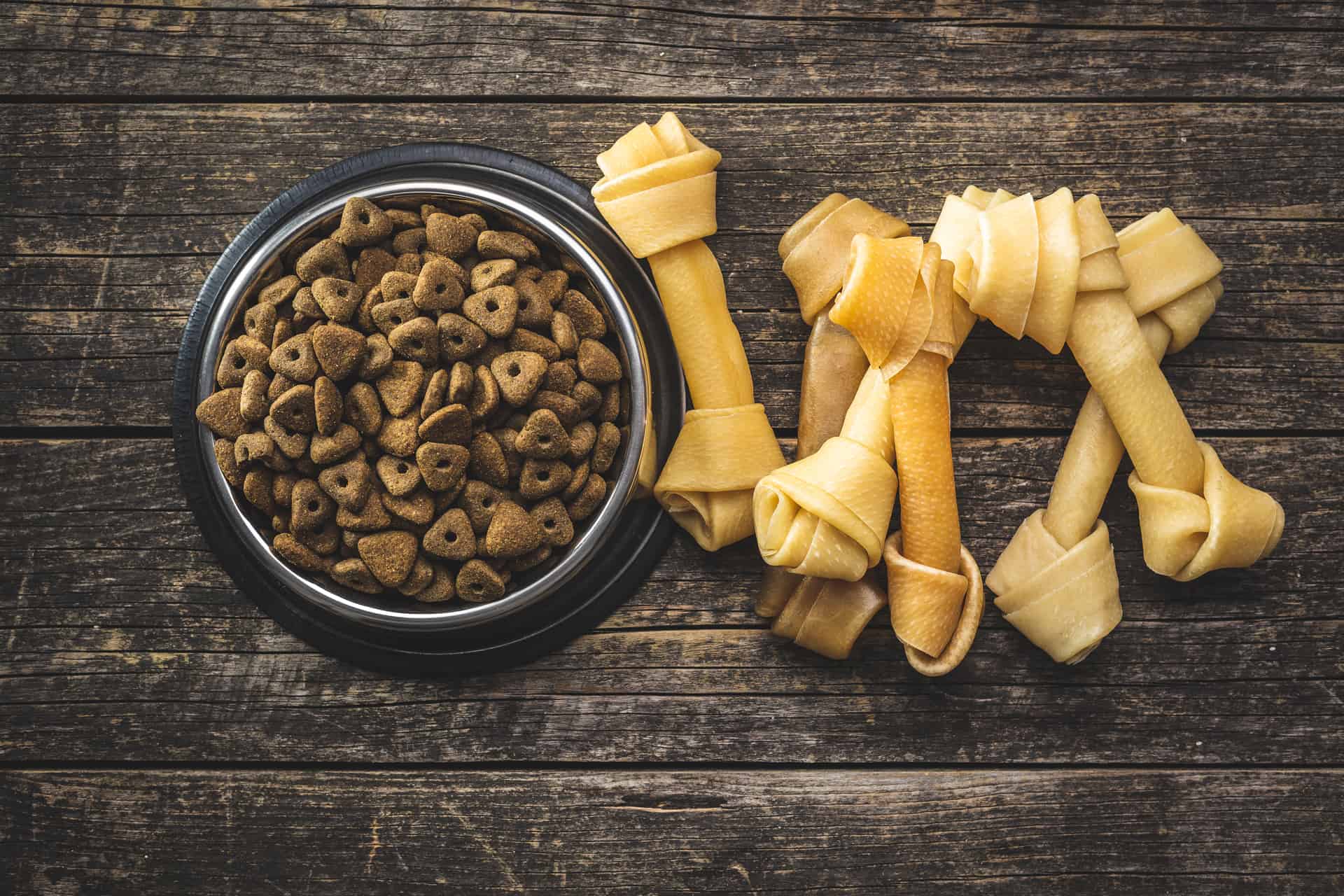Making the Right Choice: Tips for Selecting Dog Food
When picking the perfect food for your pup, it can be overwhelming with all the choices. Here are some tips to help you make the best decision:
- Read the Label: Look at the label before buying. Check that the first ingredient is meat, meat meal, or fish.
- Skip the Fillers: Avoid food with wheat, corn, or soy because it’s hard for dogs to digest and doesn’t give them much nutrition.
- No Artificial Preservatives: Don’t buy food with BHA, BHT, or ethoxyquin.
- Age and Breed Specific: Get food that fits your pup’s age and breed.
- Ask Your Vet: Talk to a vet before choosing food to make sure it’s the best fit.
Understanding Dog Nutritional Requirements
Choosing food for your pup can be tough. Grasping their nutritional needs is important. Different breeds and life stages may need different diets. Knowing what your pet requires helps you pick the optimal chow.
Age and Life Stage Considerations
Age and life stage are essential in deciding the right dog food. For puppies, more protein, fat, and calories are needed to support their growth. So, get dog food made for puppies and feed them more than adults. Adult dogs need a diet for health and wellness. Get dog food that meets their nutritional needs and suits their lifestyle – active, senior, or other needs. Senior dogs have slower metabolisms and must eat lower-calorie food. Get dog food that caters to their needs and helps with age-related health issues. Pregnant and lactating dogs require high-calorie diets for their puppies’ growth. Get quality dog food made for them.
Breed-specific / Special Needs Foods
Dogs need a balanced and healthy diet to get their specific nutritional requirements, like humans. Depending on the breed, size, and age, they might need specialized dog food. For instance, big breeds – such as Great Danes and Mastiffs – require a low-calorie, high-protein diet to hold their muscle mass. Smaller breeds – like Chihuahuas and Cairn Terriers – need less protein and more carbs to keep their energy levels high. Dogs with special needs may need hypoallergenic or grain-free food. When choosing, check the labels for quality protein sources like chicken, turkey, or fish. Avoid artificial colors, preservatives, and fillers like corn and wheat. Ask your vet for advice on the best food for your pup’s needs.
Dog Food Ingredients – Good vs. Bad
Comprehending your pup’s nutrition needs is important when picking the right grub. It’s essential to distinguish between good and bad components.
Good Ingredients: High-grade animal protein (like chicken, turkey, beef, and fish) gives the essential amino acids for muscle growth and healing. Whole grains (like brown rice and barley), fruits and vegetables (such as sweet potatoes, carrots, and blueberries) are splendid sources of fiber, vitamins and minerals that promote overall health.
Bad Ingredients: By-products (like chicken by-product meal) provide poor protein sources and could include detrimental additives or chemicals. Fillers (e.g. corn, wheat and soy) offer minimal to no nutritional value and may contribute to allergies and digestive issues in dogs. Artificial preservatives (such as BHT, BHA and ethoxyquin) are possibly damaging and can lead to long-term health complications. By carefully examining the ingredients label, you can make an informed decision to guarantee your pup is getting top-notch nutrients.
Choosing the Right Type of Dog Food
Dog food selection can be tricky! Wet, dry, homemade or store-bought? Each type has benefits and disadvantages. Let’s explore them! We’ll look at the pros and cons of each type. That way, you can make an informed decision.
Wet Dog Food vs. Dry Dog Food
Choosing the right dog food can be tricky. Wet and dry dog food both have their advantages and disadvantages. It all comes down to your pup’s individual needs and tastes.
Wet food usually has more water, making it tastier and easier for dogs with dental problems or picky eaters. It also usually has fewer preservatives and additives and provides more moisture to keep your pup hydrated. However, wet food is pricier and has a shorter shelf-life once opened.
Dry food is more affordable, easier to store, and has a longer shelf-life. It’s great for dental health and reducing tartar. But some dogs may not like the taste or have difficulty chewing it, if they have dental issues.
In the end, you need to consider your pup’s likes, dislikes, and dietary needs when choosing between wet and dry food.
Grain-free Dog Food Pros and Cons
Grain-free dog food is trending among pet owners seeking to provide their pooch with a diet that more closely resembles what they would eat in the wild. But, there are both pros and cons to this type of food.
Pros:
- It often contains high-quality animal proteins like real meat, fish, and poultry.
- It can help keep dogs feeling full longer, reducing the risk of overeating and weight gain.
- It may reduce inflammation, improve digestion, and prevent allergies in some dogs.
Cons:
- Grain-free dog food can be pricier than traditional dog food.
- It can contain high levels of fat, calories, and sodium, which is not ideal for some pooches.
- It’s best to check with your vet before making the switch.
Homemade / Raw Dog Food Pros and Cons
Feeding your pup homemade or raw food has its advantages and disadvantages.
Pros:
- You can decide what goes into the food.
- Fewer additives.
- Improved digestion.
Cons:
- Risk of nutrient deficiencies.
- Time-consuming.
- Risk of foodborne illness.
It’s important to talk to a vet before changing your dog’s diet. Also, make sure the food has the right nutrients.
Reading Dog Food Labels
Read the label on dog food packages! It’s essential for choosing the best food for your pup. Look for the ingredients, nutritional value and other info. This will help you pick a quality option. We’ll discuss how to read labels meticulously. So, you can be sure you’ve selected the right one for your canine companion.
Ingredients List Breakdown
When selecting dog food, read the ingredients list on the label. Decode it and choose wisely for your furry friend’s diet. Ingredients are ordered by weight – the heaviest is first. Look for a high-quality protein like chicken, beef or fish. Avoid fillers like corn, wheat or soy. They have little value and may upset the digestive system. Look for: brown rice, sweet potatoes, green beans, carrots and peas. These are nutrient-dense, easily digestible and provide essential vitamins and minerals. Unsure? Look for an AAFCO statement on the label. This shows the food has passed feeding trials and meets standards for dog nutrition.
Guaranteed Analysis and Nutritional Adequacy Statement
When picking dog food, it’s key to get what Guaranteed Analysis and Nutritional Adequacy Statement mean. This info can aid you in deciding if the food is right for your furry pal.
Guaranteed Analysis reveals minimum and maximum levels of crude protein, crude fat, crude fiber and moisture. This can help you figure out if the food suits your pup’s dietary needs.
Nutritional Adequacy Statement states whether the food meets the min. nutritional needs set by Association of American Feed Control Officials (AAFCO). If there’s no AAFCO statement, don’t think of it as a full and balanced diet for your pup.
Pro Tip: Read the dog food label carefully and comprehend the ingredients and any certifications or claims. Also, talk to your vet if you have doubts about your pup’s diet or nutritional requirements.
Marketing Jargon to Watch Out For
When shopping for pooch food, it’s a must to read labels and know what to look for. But be wary of marketing lingo that may lead you astray. Common terms to be aware of include:
- “Natural” or “Organic”. These terms have no regulation and don’t promise high-quality.
- “Premium” or “Gourmet”. These words have no legal definition – they’re just marketing tactics.
- “Grain-free”. Some dogs may benefit from this diet, but grain-free doesn’t mean better quality.
When reading dog food labels, search for ingredients and nutrients that fit your pup’s needs. Don’t be fooled by marketing terms.
Finding the Best Brand for Your Dog
Picking the right dog food for your pup? It’s essential! Ensure it caters to your pup’s nutritional needs. It must fit their life stage and provide the right balance of vitamins and minerals. With so many options, it can be confusing. Let us help you find the best brand for your pup.
Dog Food Brand Research
Finding the best dog food brand for your pet can be tricky. Research can help you pick the right one & avoid confusion. Here are some tips:
- Check the ingredients list. Quality, natural & organically sourced ingredients are best. Animal protein should be the first ingredient.
- Look for a reputable brand. Research the history, reputation, customer reviews & recalls.
- Consider your dog’s needs. Picky eaters, allergies & specific diets have to be taken into account.
- Consult with your vet. They can guide you in selecting the best brand for your pet’s individual needs.
Follow these tips to make an informed decision & choose the best brand for your furry friend.
Pro tip: Read the ingredient list & consult with your vet before selecting any dog food.
Consumer Reviews and Ratings
When choosing a dog food brand for your pup, reading consumer reviews and ratings is key. Consider these points:
- Quality of ingredients – pick brands with high-quality proteins (meat, fish, eggs) plus whole grains, fruits, and veggies.
- Avoid fillers & artificial additives – avoid products with fillers like corn or wheat, as they can be difficult to digest & cause allergic reactions.
- Consumer ratings & reviews – read reviews & ratings of different brands to figure out what other dog owners think.
- Ask your vet – your vet can help you find the right food for your pup’s needs & health condition.
By keeping these tips in mind, you can select a dog food brand that meets your furry friend’s nutritional needs.
Expert Opinion and Recommendations
Choosing the best dog food brand isn’t a one-stop shop. Each pup has different dietary needs, depending on age, breed, and activity level. Here are some tips to help you decide:
- Protein: Dogs are omnivores and need hefty amounts of high-quality protein. Seek out brands with meat, poultry, or fish listed first.
- Nutrition: Look for essential vitamins and minerals, like calcium, iron, and omega-3 fatty acids.
- Ingredients: Be aware of fillers and by-products.
- Expert advice: Ask your vet or a pet nutritionist for individualized recommendations.
- Pro Tip: Opt for dog food brands that have passed AAFCO feeding trials. This means the food provides complete and balanced nutrition.
Transitioning to a New Dog Food
Transitioning your pup to a fresh diet can be tricky. Make sure you know the main ingredients in the food, and that it’s a healthy balance of protein, carbs, and fats. Also, ensure the dog food you pick is age-appropriate and meets all of your pup’s nutritional requirements. Let’s explore further!
Sudden vs. Gradual Change
Transitioning your pup to a different chow can be tricky. It’s important to grasp the difference between sudden and gradual changes, to pick the right grub for your pooch’s wellbeing.
Sudden changes can cause digestion issues, such as being sick, having the runs, and not having an appetite. These should be avoided, unless there’s a medical purpose.
On the other hand, gradual changes let your pup’s digestion system adjust slowly to the new food. Start by mixing a tiny amount of the new grub with the old one, and bit by bit increase the ratio of the new food.
When picking a new doggy food, take into consideration your pup’s age, breed, weight, activity level, and any dietary restrictions. Ask your vet for advice that’s specific to your pup’s needs.
Monitoring Your Dog’s Reaction to New Food
Making the switch to a new canine cuisine can be a challenge. Observe your pooch’s response to the food to pick the correct one and guarantee their well-being and satisfaction. Look out for these indicators:
- Vomiting, loose stool, or clogged up intestines.
- Notice changes to energy levels or attitude.
- Watch your dog’s coat and skin. Shiny, clear skin and fur point to a healthy diet.
- Be mindful of their appetite. If they don’t or always seem hungry, then the food isn’t providing the right nutrition.
Tip: Introduce the new food gradually. Blend the old and new together over 7-10 days to help your doggy’s digestive system adjust.
Troubleshooting and Issues to Watch For
Transitioning to a new dog food can be tough. Issues you may see? Here’s what to do:
- Digestive Upset: Vomiting, diarrhea or constipation? Slowly introduce new food over 7-10 days. Increase new food. Decrease old food.
- Food Allergies: Look for signs like itchy skin, ear infections or gastrointestinal issues. Ask your vet if you suspect allergies.
- Changes in Bowel Movements: Stool consistency changes? Try a different type of food.
- Lack of Interest: Refusing to eat the new food? Add low-sodium chicken or beef broth. Or mix in a bit of old food.
Pay attention to behavior. Make adjustments as needed to get the right nutrition.
Frequently Asked Questions
1. How do I know which dog food is the right one for my pet?
Every dog is different, so it’s important to do your research and understand what your dog needs. Look for high-quality ingredients and avoid any fillers or by-products. Also, consider your dog’s age, breed, and activity level when selecting their food.
2. Are grain-free diets better for dogs?
There is no one-size-fits-all answer to this question. While some dogs may benefit from a grain-free diet, others may not. Grain-free diets can also be more expensive and may not provide all the necessary nutrients your dog needs.
3. Should I feed my dog wet or dry food?
Both wet and dry food can provide a complete and balanced diet for your dog. However, dry food may be more convenient and affordable, while wet food can be a good option for dogs with dental issues or those who need additional hydration.
4. How often should I feed my dog?
Most adult dogs should be fed twice a day, but the feeding frequency may depend on your dog’s age, activity level, and health needs. Puppies and senior dogs may require more frequent meals, while overweight dogs may benefit from smaller, more frequent meals.
5. Can I feed my dog human food?
While some human foods can be safe for dogs in small quantities, it’s best to stick to dog food formulated for their specific nutritional needs. Many human foods can be toxic to dogs, and feeding them table scraps can lead to obesity and other health issues.
6. How should I switch my dog’s food?
When switching your dog’s food, it’s best to do so gradually over the course of a week or two. Start by mixing a small amount of the new food with their current food and gradually increase the proportion of the new food over time. This will help prevent digestive upset and ensure a smooth transition.







